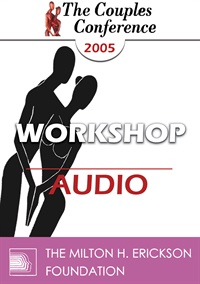CC05 Workshop 05 - Core Negative Images (CNis) and Dead Stop Contracts: Powerful Tools of Relational Recovery Therapy - Terry Real, LICSW
- Average Rating:
- Not yet rated
- Topic Areas:
- Workshops | Relational Recovery Therapy (RRT) | Relationships
- Categories:
- Couples Conference | Couples Conference 2005 | Pioneers in Couples and Family Therapy
- Faculty:
- Terry Real, LICSW
- Duration:
- 1:57:24
- Format:
- Audio Only
- Original Program Date:
- Mar 04, 2005
- License:
- Never Expires.
Description
Description: Introduces Core Negative Images (CNIs) and Dead Stop Contracts as tools in Relational Recovery Therapy to help couples identify and shift destructive patterns. Explores common dynamics like control, criticism, and withdrawal, and how family of origin shapes behavior. Uses the Relationship Grid to teach healthy boundaries and self-esteem. Emphasizes truth, compassion, and mutual empowerment as foundations for deeper connection and sustainable intimacy.
Syllabus Description: Couples notoriously have the same fight for 40 years. They're not speaking to each other, but to each other's core negative image. This workshop teaches participants to identify and share each partner's CNI of the other, how these CNis interact to produce vicious circles and how to break the pattern.
Educational Objectives:
- To describe two ways to deal effectively with grandiosity.
- To describe two ways to engage each partner's "best self."
*Sessions may be edited for content and to preserve confidentiality*
Credits
Handouts
| Timestamped Transcript (887.2 KB) | 20 Pages | Available after Purchase |
| Timestamped Transcript (800.3 KB) | 17 Pages | Available after Purchase |
| Ericksonian Learning Snapshot (246.3 KB) | 2 Pages | Available after Purchase |
Faculty

Terry Real, LICSW Related Seminars and Products
Terry Real, LICSW, is a nationally recognized family therapist, author, and teacher. He is particularly known for his groundbreaking work on men and male psychology as well as his work on gender and couples; he has been in private practice for over twenty-five years. Terry has appeared often as the relationship expert for Good Morning America and ABC News. His work has been featured in numerous academic articles as well as media venues such as Oprah, 20/20, The Today Show, CNN, The New York Times, The Wall Street Journal, Psychology Today and many others.


